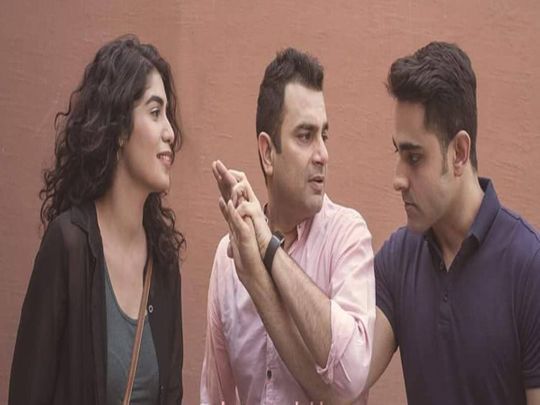
Pakistan’s pride-of-performance winning actor, director and screenwriter Sarmad Sultan Khoosat’s critically acclaimed play, ‘Jhaanjar Di Paanwan Jhankaar’, is now available for streaming on Zee Theatre, a subsidiary of Zee5, which offers a collection of recorded theatre plays — also called ‘cine plays’ — produced in India and internationally.
‘Jhaanjhar…’, which premiered in Lahore in April 2018, is directed by Kanwal Khoosat, Sarmad’s sibling and the executive director of Olomopolo Media, a creative enterprise. The play has three main characters at the heart of action — the urban-based, visually impaired and introverted young man Hamza (played by Zain Afzal) who may be hiding a deep secret that he wouldn’t come out with until he encounters friendly neighbour Zaman (Sarmad Khoosat), an actor prepping for a screen role that challenges societal and gender norms; and Hamza’s overprotective mother (Samiya Mumtaz), a prim and proper woman of middle age who can’t seem to come to terms with her son’s deviations.
Jhaanjhar … got rave reviews from critics, particularly for the performances of its lead actors. Kanwal Khoosat, whose other stage play, Mushk, starring Sania Saeed and Nimra Bucha, two of the country’s finest actors, has also been picked up by Zee Theatre, tells Gulf News that the digital version of Jhaanjhar … was produced a few months after it had had a successful run in Lahore, Karachi and Islamabad.
“We generally archive our live recordings, so we sent [the recordings of] Jhaanjhar … and Mushk to Zee. But there were some technical lags such as 4K sound etc, due to which we had to have a performance of the play exclusively for recording purposes,” she adds. “The version that you see on the digital app was shot on a soundstage, in a studio, with multiple cameras.”
From the audience’s point of view, Kanwal admits, the experience of a live performance could not be replicated on a recorded web stream: “We have our YouTube channel, but we haven’t uploaded any of our play recordings because we’ve not been able to resolve this very dilemma.
“Having said that, I also believe that if you restrict your audience’s experience to theatre halls only, and for a specific time and space alone, how are you going to expand your viewership? That’s the argument we finally reconciled ourselves to.”
As regards the challenges of shooting a theatrical performance for a television audience, Kanwal says, “We were given a one-line brief by Shailja [Kejriwal, CCO Special Projects at Zee Entertainment Enterprises Limited], which was, ‘Follow the eye line!’ That did the trick for us.
“Eye line is the onlookers’ experience. In a proscenium setting, there is platform seating, which means that if I have to shoot the play while following the eye line, I can shoot it from a low angle as well as a high angle and any angle in between because the audience is presumably seated in that order. As a director I found that quite interesting.
“Cine play is an evolving genre,” she continues, “so its conventions are yet to form completely. We are at the exploratory stage.”
When asked if there were any reference points that she used, Kanwal says, “I had seen the theatre plays that had been adapted for PTV, so I had an idea about their visual/technical vocabulary. Other than that, I just followed my good sense.”









